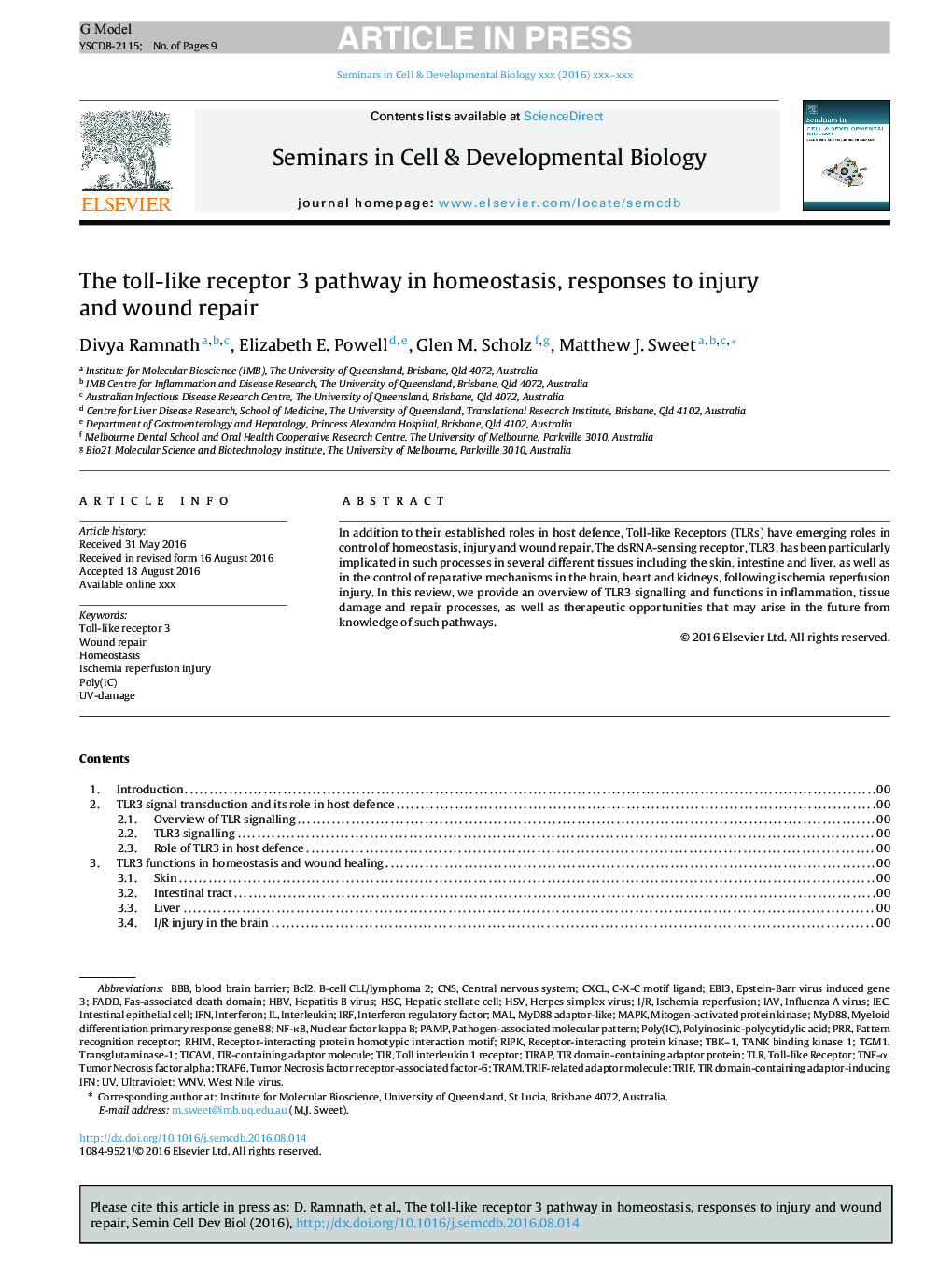| Article ID | Journal | Published Year | Pages | File Type |
|---|---|---|---|---|
| 5534857 | Seminars in Cell & Developmental Biology | 2017 | 9 Pages |
Abstract
In addition to their established roles in host defence, Toll-like Receptors (TLRs) have emerging roles in control of homeostasis, injury and wound repair. The dsRNA-sensing receptor, TLR3, has been particularly implicated in such processes in several different tissues including the skin, intestine and liver, as well as in the control of reparative mechanisms in the brain, heart and kidneys, following ischemia reperfusion injury. In this review, we provide an overview of TLR3 signalling and functions in inflammation, tissue damage and repair processes, as well as therapeutic opportunities that may arise in the future from knowledge of such pathways.
Keywords
HSCC-X-C motif ligandRHIMpoly(IC)MyD88 adaptor-likeIRFEBI3IAVCXCLPRRBcl2FADDPAMPHSVNF-κBMYD88MALB-cell CLL/lymphoma 2I/RMAPKpathogen-associated molecular patternIschemia reperfusioninterferonIFNinterleukinFas-associated death domainCNSblood brain barrierBBBHepatic stellate cellintestinal epithelial cellcentral nervous systeminterferon regulatory factornuclear factor kappa BHBVInfluenza A virusherpes simplex virushepatitis B virusmyeloid differentiation primary response gene 88mitogen-activated protein kinasepolyinosinic-polycytidylic acidIECPRR, Pattern recognition receptor
Related Topics
Life Sciences
Biochemistry, Genetics and Molecular Biology
Cell Biology
Authors
Divya Ramnath, Elizabeth E. Powell, Glen M. Scholz, Matthew J. Sweet,
